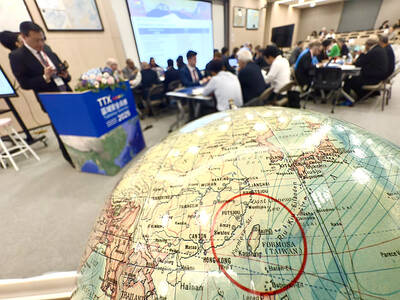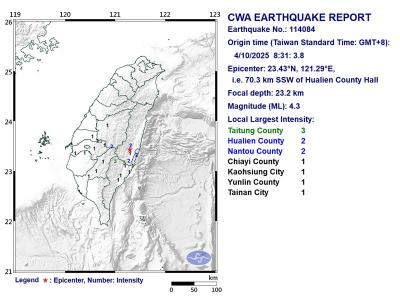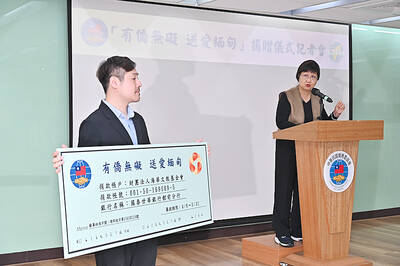The heads of cross-strait affairs in Taiwan and China had a conversation yesterday via a newly installed telephone hotline connecting the two sides of the Strait, during which they discussed recent developments in cross-strait relations, following rumors that the Chinese side has refused to answer calls since the Jan. 16 presidential and legislative elections.
During the conversation, Mainland Affairs Council Minister Andrew Hsia (夏立言) and China’s Taiwan Affairs Office Minister Zhang Zhijun (張志軍) exchanged Lunar New Year greetings.
It was the first time Hsia and Zhang used the hotline since the Jan. 16 elections, in which president-elect Tsai Ing-wen (蔡英文) of the Democratic Progressive Party (DPP) won the presidency and the party gained a legislative majority.
Hsia told Zhang that peaceful and stable development of cross-strait ties is the hope of people across party lines in Taiwan, and that both sides of the Strait should maintain and cherish the achievements made so far, a statement issued by the council said.
Expanding and deepening cross-strait engagement would help improve mutual trust and understanding, Hsia said, adding that both sides should avoid actions that could escalate tensions, but instead promote a healthy relationship.
The conversation came one day after Zhang issued a Lunar New Year message in which he lauded the achievements in the development of cross-strait ties and expressed hope that the two sides would continue to work together to maintain peace across the strait in the coming year, basing their efforts on the so-called “1992 consensus,” a tacit understanding between the Chinese Nationalist Party (KMT) and the Chinese government that both sides of the Strait acknowledge there is “one China,” with each side having its own interpretation of what “China” means. Former Mainland Affairs Council chairman Su Chi (蘇起) admitted making up the term in 2000.
The DPP has refused to recognize the existence of any such consensus.
There have been concerns that relations across the Taiwan Strait would deteriorate under Tsai’s administration, since the DPP is known for its pro-Taiwan independence stance.
Tsai, without using the term “1992 consensus,” has said that she “understands and respects” the “historic fact” that Taiwan and China “reached some common acknowledgments and understanding in 1992.”
In an interview with the Liberty Times (sister newspaper of the Taipei Times) late last month, Tsai said the two sides of the Taiwan Strait would need to work hard to build a “consistent, predictable and sustainable” relationship.

DEFENSE: The National Security Bureau promised to expand communication and intelligence cooperation with global partners and enhance its strategic analytical skills China has not only increased military exercises and “gray zone” tactics against Taiwan this year, but also continues to recruit military personnel for espionage, the National Security Bureau (NSB) said yesterday in a report to the Legislative Yuan. The bureau submitted the report ahead of NSB Director-General Tsai Ming-yen’s (蔡明彥) appearance before the Foreign and National Defense Committee today. Last year, the Chinese People’s Liberation Army (PLA) conducted “Joint Sword-2024A and B” military exercises targeting Taiwan and carried out 40 combat readiness patrols, the bureau said. In addition, Chinese military aircraft entered Taiwan’s airspace 3,070 times last year, up about

Taiwan is stepping up plans to create self-sufficient supply chains for combat drones and increase foreign orders from the US to counter China’s numerical superiority, a defense official said on Saturday. Commenting on condition of anonymity, the official said the nation’s armed forces are in agreement with US Admiral Samuel Paparo’s assessment that Taiwan’s military must be prepared to turn the nation’s waters into a “hellscape” for the Chinese People’s Liberation Army (PLA). Paparo, the commander of the US Indo-Pacific Command, reiterated the concept during a Congressional hearing in Washington on Wednesday. He first coined the term in a security conference last

A magnitude 4.3 earthquake struck eastern Taiwan's Hualien County at 8:31am today, according to the Central Weather Administration (CWA). The epicenter of the temblor was located in Hualien County, about 70.3 kilometers south southwest of Hualien County Hall, at a depth of 23.2km, according to the administration. There were no immediate reports of damage resulting from the quake. The earthquake's intensity, which gauges the actual effect of a temblor, was highest in Taitung County, where it measured 3 on Taiwan's 7-tier intensity scale. The quake also measured an intensity of 2 in Hualien and Nantou counties, the CWA said.

The Overseas Community Affairs Council (OCAC) yesterday announced a fundraising campaign to support survivors of the magnitude 7.7 earthquake that struck Myanmar on March 28, with two prayer events scheduled in Taipei and Taichung later this week. “While initial rescue operations have concluded [in Myanmar], many survivors are now facing increasingly difficult living conditions,” OCAC Minister Hsu Chia-ching (徐佳青) told a news conference in Taipei. The fundraising campaign, which runs through May 31, is focused on supporting the reconstruction of damaged overseas compatriot schools, assisting students from Myanmar in Taiwan, and providing essential items, such as drinking water, food and medical supplies,